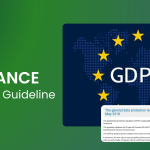Running a Wix website means handling visitor information. Maybe you collect emails through a contact form. Maybe you track which pages people visit. Maybe you run an online store. Whatever you do, if you’re gathering any personal data, you need a privacy policy.
This isn’t just a suggestion. Privacy laws around the world require websites to explain how they handle user data. Even though Wix doesn’t force you to create one, you’re still legally responsible for having a proper privacy policy if you collect personal information.
Beyond the legal side, a good privacy policy builds trust. When visitors see you’re upfront about data collection, they feel more comfortable sharing information or making purchases. Think of it as a conversation where you tell people exactly what you’re doing with their data.
This guide covers everything you need to know about privacy policies for Wix websites. You’ll learn why you need one, what to include, how to generate it, and how to add it to your site. Let’s get started.
Why Does Your Website Need a Wix Privacy Policy?

The Legal Requirements
Wix doesn’t require every user to post a privacy policy, but that doesn’t mean you’re off the hook. If you collect any personal data – names, emails, contact information, or tracking data through cookies – most privacy laws say you need a policy.
Wix’s own terms make this clear. As the site owner, you’re responsible for following privacy laws that apply to your visitors. Wix provides the platform, but compliance is your job.
Privacy laws like GDPR and CCPA don’t care whether Wix requires a policy. They care whether you’re collecting data from their residents. And if you are, you need to tell people about it.
Building Trust With Visitors
Laws aside, privacy policies help people trust you. When you clearly explain how you handle information, visitors see you as transparent and professional.
This matters especially for small businesses and online stores. Customers are more likely to buy from sites that take privacy seriously. They’re more likely to sign up for newsletters when they know what they’re getting into.
Even if legal requirements didn’t exist, posting a comprehensive privacy policy would still be smart business. It shows you care about your audience.
What Wix Does and Doesn’t Cover
When you use Wix features like contact forms, newsletters, or an online store, you’re collecting data from your visitors. Wix’s platform might also collect certain visitor information on your behalf – cookies for analytics, for example.
Wix has its own privacy practices for how it operates. But those don’t cover your specific website’s data collection or the third-party apps you add to your site.
That’s where your privacy policy comes in. You need to explain what data your site collects and how you use it. If you have any interaction where users enter personal information, or if you use tools like Google Analytics, you absolutely need your own privacy policy.
Wix Privacy Policy Laws You Should Know About
Different privacy laws apply depending on where you and your visitors are located. Here are the major ones that might affect your Wix website:
GDPR (General Data Protection Regulation)
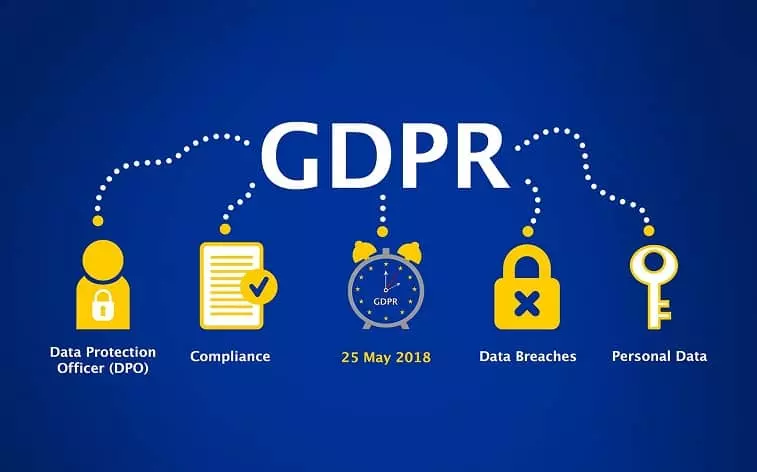
This EU law applies if you collect data from anyone in Europe, even if your business is somewhere else. GDPR requires a clear privacy policy that covers:
- Who you are and how to contact you
- What personal data you collect
- Why you collect it and how you use it
- Who you share it with
- Users’ rights (access, correct, or delete their data)
The fines for not following GDPR are serious. If EU visitors can access your Wix site, you need to comply.
CCPA (California Consumer Privacy Act)
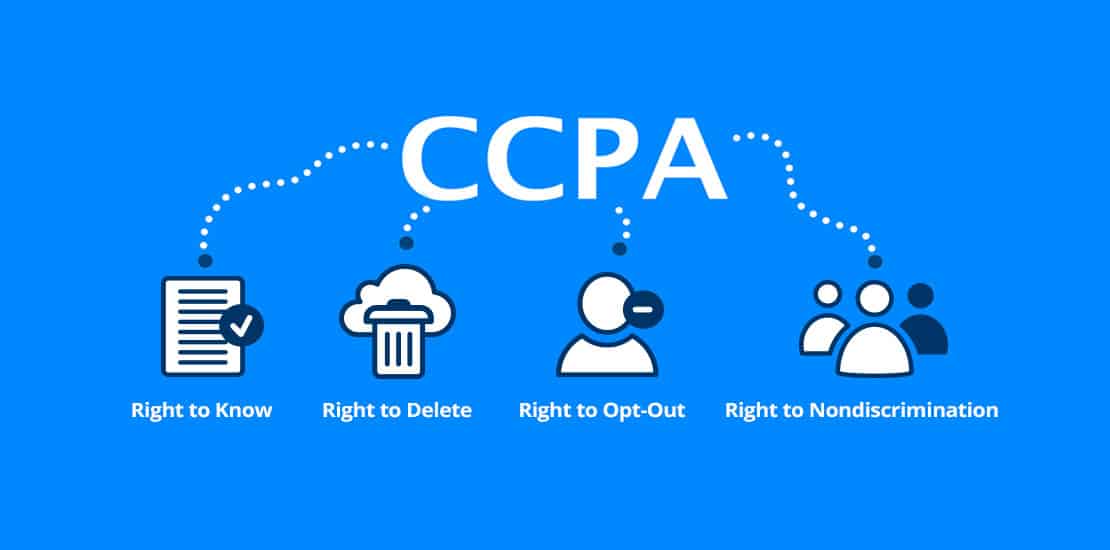
This California law applies to businesses collecting personal information from California residents. Many online businesses fall under CCPA even if they’re small.
Your privacy policy needs to explain California consumers’ rights, including the right to know what data you have, delete it, or opt out of data sales. You must provide at least two ways for people to submit requests.
CCPA requires disclosing what categories of data you collect, why you collect it, who you share it with, and how consumers can exercise their rights.
CalOPPA (California Online Privacy Protection Act)
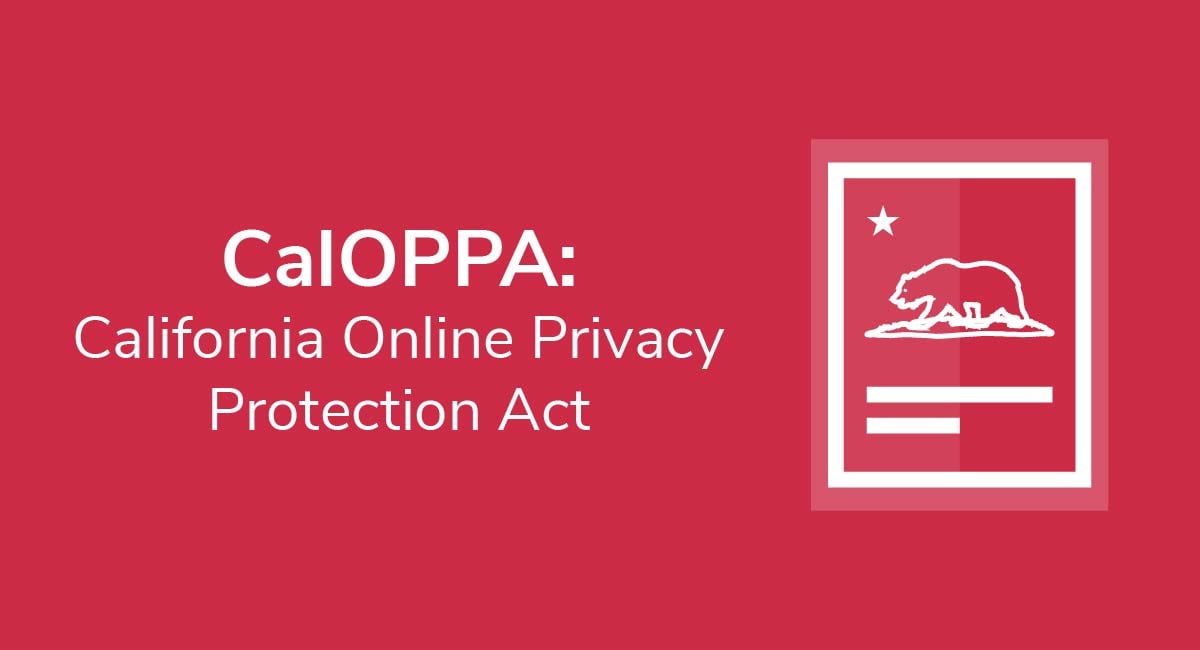
CalOPPA requires any website collecting personal information from California consumers to post a privacy policy. Since California is huge and online businesses reach everywhere, this effectively covers most websites.
You need to state what data you collect, who you share it with, how users can review or delete their data, and how you handle browser “Do Not Track” signals.
Other Laws
Canada has PIPEDA, Brazil has LGPD, and many U.S. states are passing their own privacy laws. The details vary, but they all share common themes: transparency, user control, and data protection.
Even if you’re not sure which laws apply to you, following the basic principles of these regulations keeps you on safe ground. Collect data responsibly, tell people what you’re doing, and give them control over their information.
What to Include in Your Wix Privacy Policy
A complete privacy policy covers several key areas. Here’s what you need:
Business Information
Start with the basics. Who are you? Include your business name, contact email, and physical address if you have one. This tells visitors who’s responsible for the site and how to reach you with questions.
What Data You Collect
List every type of personal information you gather. Be specific:
- Contact information: names, emails, phone numbers, addresses
- Account information: usernames, passwords (note that these are encrypted)
- Payment information: credit card details, billing addresses
- Technical data: IP addresses, browser types, device information
- Usage data: which pages people visit, how long they stay
- Cookie data: what cookies you use and what they track
Don’t just say “we collect information.” Say exactly what you collect and where it comes from.
How You Collect Data
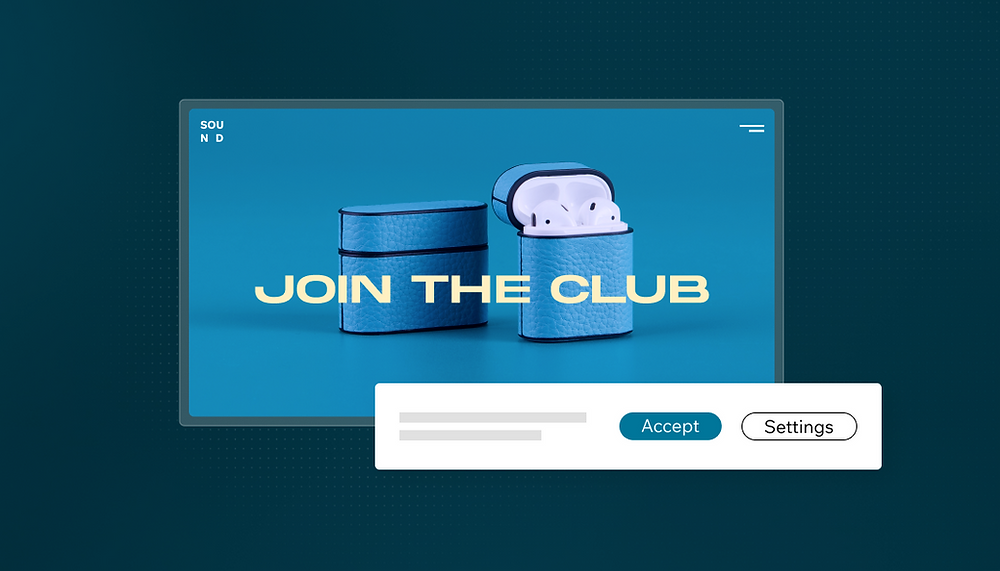
Explain your collection methods clearly:
- Contact forms on your site
- Newsletter signup boxes
- Order forms for purchases
- Account registration
- Cookies and tracking technologies
- Analytics tools like Google Analytics
Why You Collect Data
Tell people the purpose behind each type of collection:
- “We collect your email through our newsletter signup to send you weekly product updates”
- “We use Google Analytics to understand which pages visitors view most often”
- “We collect billing information to process your orders”
- “We use cookies to remember your shopping cart items”
How You Use Data
Beyond collection, explain what you do with the information:
- Fulfill orders and provide services
- Send marketing emails (with permission)
- Improve your website based on usage patterns
- Respond to customer service requests
- Comply with legal requirements
Who You Share Data With
List any third parties that receive visitor data:
- Payment processors (PayPal, Stripe, etc.)
- Email marketing services (Mailchimp, etc.)
- Analytics providers (Google Analytics)
- Advertising networks
- Shipping companies
For each one, explain what data they receive and why.
Data Storage and Security
Explain where you store data and how you protect it. Mention that Wix hosts data on servers in different locations (USA, EU, Israel). Note that you use security measures like encryption, though no system is completely secure.
User Rights and Choices
This is critical for GDPR and CCPA compliance. Tell visitors they can:
- Request a copy of their data
- Ask you to correct inaccurate information
- Request deletion of their data
- Opt out of marketing emails
- Withdraw consent for data processing
Provide clear instructions on how to exercise these rights. Include a contact email or form for privacy requests.
Cookies and Tracking
![]()
Describe what cookies your site uses:
- Essential cookies: needed for the site to function (shopping cart, login)
- Analytics cookies: track how people use your site
- Advertising cookies: show targeted ads
- Social media cookies: from embedded content
Link to your Wix cookie banner and explain how visitors can manage cookie preferences.
Third-Party Links
If your site links to other websites, note that you’re not responsible for their privacy practices. Encourage visitors to read other sites’ privacy policies.
Children’s Privacy
If your site isn’t intended for children under 13 (or 16 in the EU), state that you don’t knowingly collect data from kids. If you do target children, you need special provisions under laws like COPPA.
Policy Updates
Let people know you might update the policy. Explain how you’ll notify them of changes – maybe through email, a site notice, or just updating the “last modified” date.
Contact Information
Finally, provide a way for users to contact you with questions or requests regarding the privacy policy. This is often the last section of the policy. Include an email address (and/or a mailing address) that you actively monitor.
The main point: Make it easy for people to reach you with privacy questions or concerns.
How to Add Privacy Policy to Wix Website
Once you have your policy text, adding it to your Wix site takes just a few steps.
Step 1: Create a New Page
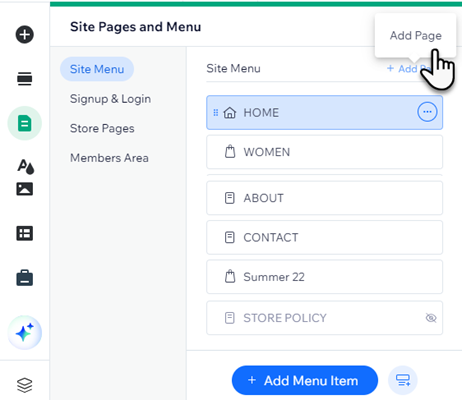
Log into your Wix account and open your site in the Editor. Click “Add Page” or “Pages” in the left menu. Choose to add a new page and name it “Privacy Policy.”
Set the page layout. For a privacy policy, a simple text-focused layout works best. Choose a blank template or one with minimal distractions.
Step 2: Add Your Policy Content
On your new Privacy Policy page, add a text element. Click the “Add” button, then “Text,” and choose a text box.
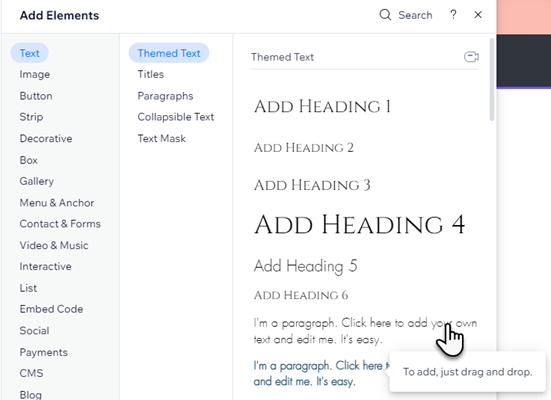
Paste your privacy policy content into the text box. Format it for readability:
- Use headings for main sections
- Break up long paragraphs
- Use bullet points for lists
- Make important information bold
- Add spacing between sections
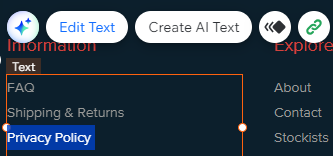
Make the text size comfortable to read – not too small. Choose a clean, professional font.
If you don’t have your content ready yet, try the Free Privacy Policy Generator for GDPR Compliance by Consentik. It quickly creates clear, professional privacy policies that meet global data laws like GDPR and CCPA – protecting your business and building user trust.
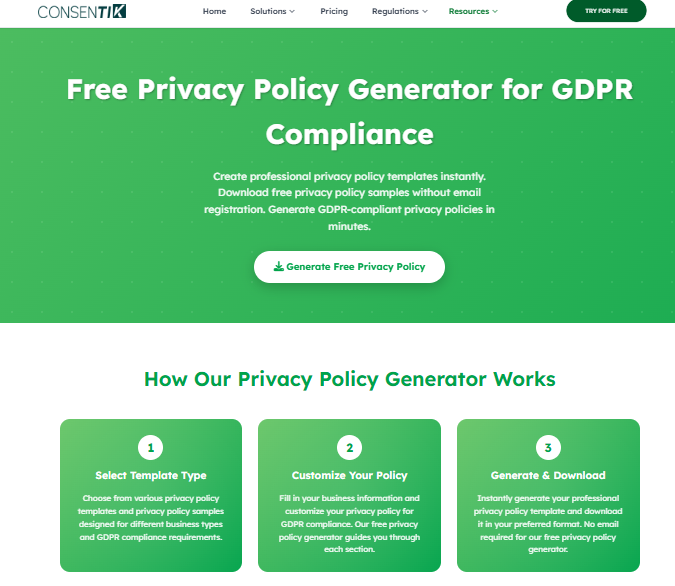
With this tool, you can have a privacy policy that explains how your website collects, uses, and protects visitor data. It should outline your data collection methods, cookie usage, third-party tools, user rights, and contact details. Without one, websites risk legal penalties, fines, and loss of credibility.
Step 3: Link to Your Privacy Policy
The most common place for a privacy policy link is your site footer. This makes it accessible from every page.
Click on your footer section in the Editor. Add a text element or edit an existing one. Type “Privacy Policy” and link it to your Privacy Policy page.
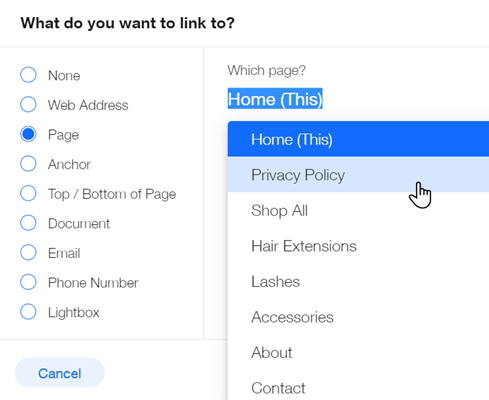
Most sites format this as: “Privacy Policy | Terms of Use | Contact” in small text at the bottom.
Publish your site. Then visit it and click the footer link to make sure it works correctly.
Step 4: Consider Alternative Placement
Besides the footer, you might also link to your privacy policy:
- Near contact forms (so people can read it before submitting data)
- On checkout pages (before people enter payment info)
- In your site’s main menu if you want extra visibility
Some websites also display a small notice on forms: “By submitting this form, you agree to our Privacy Policy” with a link.
Optional: Embedding External Policies
If you used a third-party generator that hosts your policy, you could link directly to that external URL. Or some generators provide embed codes.
To embed external content on Wix, go to Add > Embed > Embed a Widget and paste the code.
However, hosting the policy on your own Wix page is usually better. It keeps visitors on your site, matches your design, and gives you full control over the content.
Consentik Can Make Your Wix Privacy Policy Work Better
You’ve created a privacy policy. Great start. But here’s the problem: your policy promises users can control cookies, yet most Wix sites load tracking scripts immediately. That gap between promise and reality? That’s a compliance issue.
Consentik bridges that gap.

What Consentik Does for Your Wix Site
Consentik is a Google-certified and Microsoft-certified cookie consent tool that turns your privacy policy promises into real controls. This app can enforce what your privacy policy promises. Here’s how it works:
- It blocks scripts until consent is given. Your policy says you won’t track without permission. Consentik enforces this by blocking Google Analytics, Facebook Pixel, and other trackers until visitors choose. No manual coding required.
- It gives visitors real control. Through a preferences popup, visitors can see exactly what cookies your site uses and decide which ones to allow. They can change their minds anytime. This matches what your privacy policy promises about user control.
- It keeps proof of consent. When someone agrees to cookies, Consentik logs it with timestamps. If you ever need to prove compliance, you have documented records showing who consented to what and when.
- It matches your site’s design. Your banner and popup aren’t generic. You customize colors, text, and position to match your brand. This keeps the consent experience feeling like part of your site, not a legal add-on.
- It speaks multiple languages. Your policy might be in English, but Consentik detects visitor language and shows the banner in their language. A language selector lets them switch if needed. This meets legal requirements that consent must be understandable.
Connecting Policy to Practice
Think of it this way: your privacy policy is a contract with visitors. Consentik is how you fulfill that contract.
When your policy says “we use analytics cookies to improve our site,” Consentik shows visitors a clear choice to accept or decline those cookies. When they choose, it enforces their decision instantly.
Without this connection, you’re making promises you can’t keep. With Consentik, your policy becomes more than words on a page.
Will It Hurt Your Data?
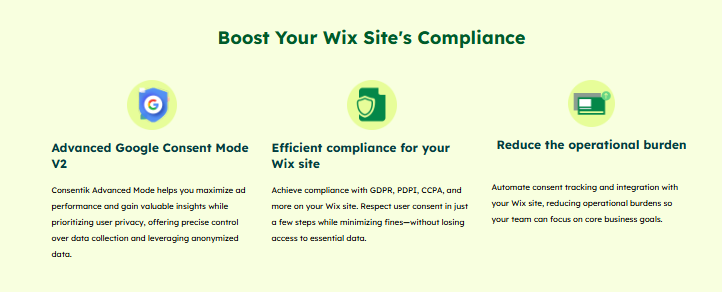
You might worry: “If people can decline cookies, won’t I lose all my analytics?”
Not really. Most visitors accept cookies when you explain their purpose clearly. And even when someone declines, Google Consent Mode still provides anonymous aggregate data. You get compliance plus useful insights.
The alternative-tracking everyone without real consent – risks fines that dwarf any analytics value.
Privacy compliance done right isn’t just about avoiding fines. It’s about building the kind of site people feel comfortable using. Consentik makes the technical side manageable so you can focus on running your business. Install it, connect it to your policy, and move forward knowing your compliance isn’t just theoretical.
Moving Forward
A privacy policy isn’t busy work—it protects your business and builds trust. Start by understanding what data you collect. Use Wix’s privacy policy generator or a third-party tool to create a complete policy. Add it prominently to your site and keep it updated.
This isn’t just about avoiding fines. It’s about showing visitors you respect their privacy. In a world of constant data breaches, that matters. Ready? Go to your Wix dashboard, use the generator, customize it, and add it to your site today. Your privacy policy is a promise. Make it count.

![2026 Latest Data Privacy Violations [With Real Cases]](https://consentik.com/wp-content/uploads/2025/12/Data-Privacy-Violations-150x150.png)
